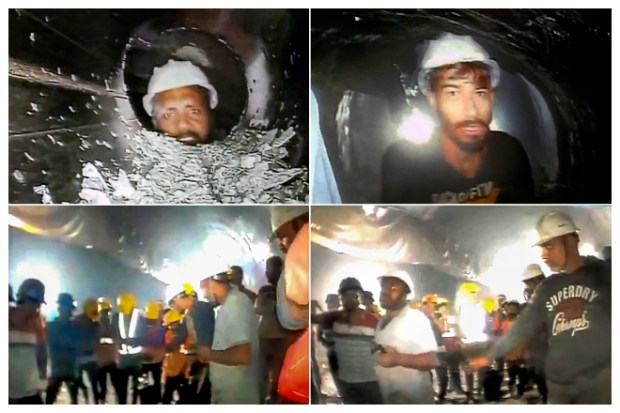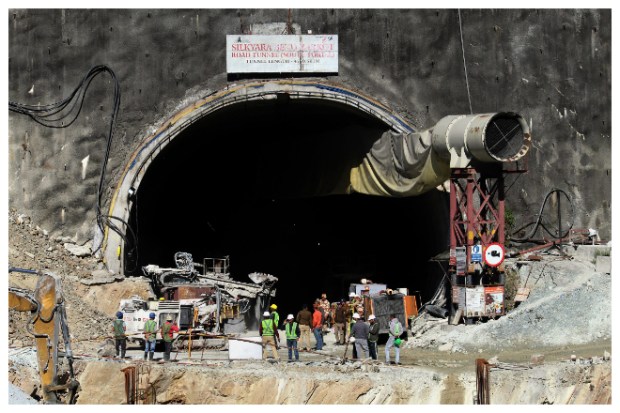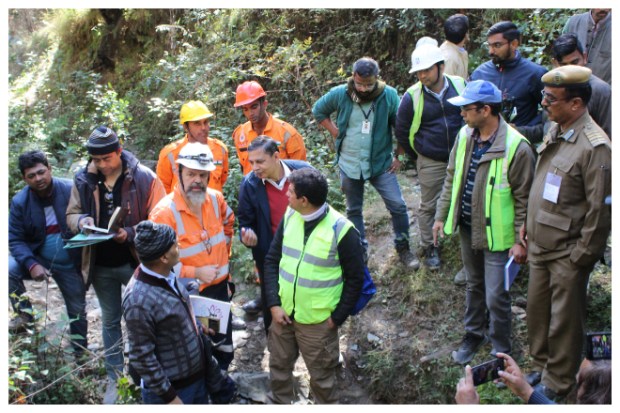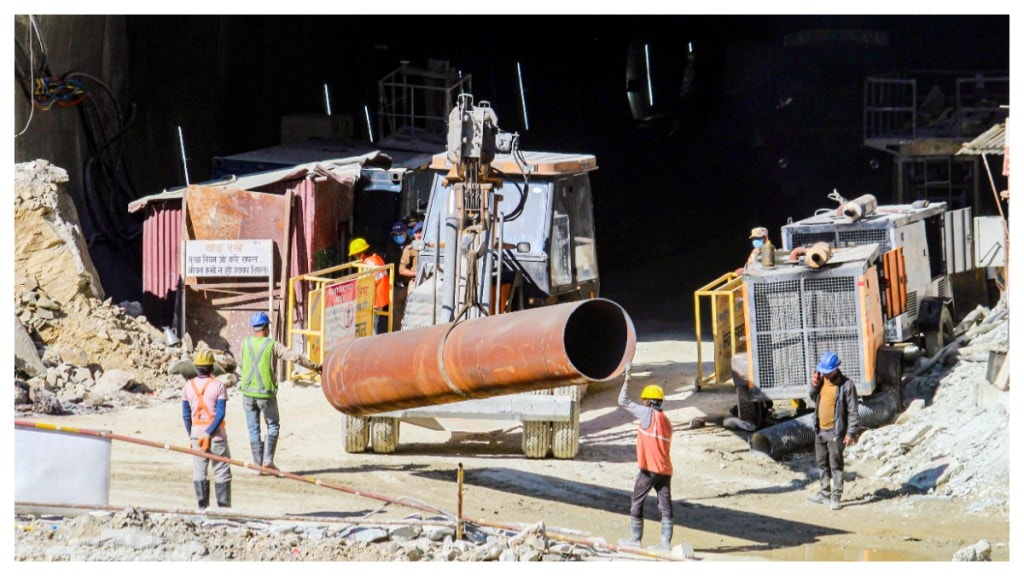Engulfed in profound silence and darkness, 41 workers continue to remain trapped under the debris of the collapsed section of Uttarkashi’s Silkyara tunnel. However, to everyone’s relief, the initial images of the workers were released on Tuesday morning. This revelation followed a significant development as rescuers successfully inserted a six-inch-wide pipeline through the debris—a pivotal breakthrough enabling the delivery of larger quantities of food to the laborers.
This incident has without a doubt raised concerns about the safety and resilience of infrastructure in the hilly area, prompting a thorough investigation into the causes and consequences of the collapse.

A detailed report here:
The under-construction Silkyara tunnel spans 4.5 kilometers between Silkyara and Dandalgaon. It forms a crucial segment of the Brahmakhal-Yamunotri section of the National Highway, as part of the government’s Char Dham road scheme. Unfortunately, the very structure meant to enhance connectivity between four significant pilgrimage sites known as Char Dham – Kedarnath, Badrinath, Yamunotri, and Gangotri – through an extensive 889-kilometer road network, has become a site of tragedy. Since its inception in December 2016, the project has been marred by controversy, as environmentalists have expressed concerns about the potential adverse effects of extensive drilling and construction activities. There are apprehensions about subsidence, landslides, and significant environmental damage in the ecologically vulnerable Himalayan region.
What caused the Silkyara tunnel to cave in?
The Char Dham Project in 2018 faced scrutiny due to its hazardous effects on the Himalayan ecology. Experts in ecology and environmentalists presented a petition to the Supreme Court, expressing apprehensions about potential environmental disasters such as flooding and landslides. Their concerns were rooted in the destruction of ecosystems caused by the implementation of infrastructure projects.
As per an Indian Express report, the reason behind the collapse could be attributed to a concealed weak patch of rock, which would not have been evident during construction. This patch may have consisted of a fractured or fragile rock with numerous joints, rendering it structurally vulnerable.
Another reason could be attributed to water seepage through a loose patch of rock. Over time, water erosion of loose rock particles can create an unseen void on the tunnel’s top. It’s important to note that these explanations are general principles, and a thorough investigation is necessary to determine the specific factors behind this collapse.

R K Goel, former chief scientist at the Central Institute of Mining and Fuel Research, told IE that the collapsing of weak rock mass during tunnel construction in the Himalayas is quite common. A shear zone is formed when two rocks experience movement, resulting in the crushing of the rocks. The altered state of this crushed rock can manifest changes in its behavior, possibly acquiring clay content or undergoing weathering over time. Moreover, the response of this shear zone to ground stresses holds significant importance, Goel clarified.
To safeguard weak sections, various methods are employed, tailored to the length and strata of the shear zone. If the shear zone is small, forepoles and rock bolts can be used. Some of these decisions are made during the design phase — if the shear zone is already known, it is incorporated into the design. If these sections are not known in advance, protection measures are prepared in advance, Goel explained.
Crucial data is collected during construction, and this information then plays a vital role in understanding the potential triggers that cause the collapse.
Is tunneling through Himalayan region too risky?
In geological terms, the Himalayas, formed between 40 million and 50 million years ago, are still relatively young and continue to grow due to the ongoing collision between the Indian and Eurasian tectonic plates.
Certain areas exhibit fragile rock formations unsuitable for tunneling, while others boast robust geological characteristics. However, even in regions with fractured or delicate rock formations, there exist technical solutions to address the challenges.
Furthermore, it’s essential to recognize that tunnel construction, when executed properly, does not inherently harm the ecology of mountains or hills. With a history spanning around 200 years, tunnel-building technology, if applied correctly, poses minimal danger to the environment.

As of a 2021 research project undertaken by the Wadia Institute of Himalayan Geology (WIHG) and documented in the Journal of Earth Systems, over half of Uttarakhand, encompassing 51 percent of the region, including Uttarkashi, has been designated as falling within ‘high and very high’ landslide-prone zones.
Despite taking extensive safety measures, conducting thorough assessments, and seismic and geotechnical studies, tunnel collapses during construction can still happen. Unnoticed water seepage may fill the tunnel, eventually causing it to collapse. In the challenging Himalayan landscape, factors like seismic activities and improper disposal of excavated material, especially around tunnel projects, contribute to the occurrence of such accidents.
What can be done to avoid such infrastructure lapses in future?
The foundational aspect of tunnel construction involves a thorough investigation of the mountain/rock formation. Engineers utilize seismic refraction waves to assess the solidity of different patches within the rock. In India, the process involves digging boreholes to extract core samples for petrographic analysis. This microscopic examination evaluates mineral content, grain size, texture, and other features influencing the rock’s mechanical behavior. These investigations are crucial in determining whether the rock can withstand the load imposed during tunnel creation.
Another important step is ensuring stability. Achieving stability in tunnel construction is a multifaceted process. Even after excavation and initial support implementation, continuous monitoring is imperative. Various instruments, such as stress meters and deformation meters, assess how the rock behaves in different locations. Additionally, the supports provided to the tunnel, ranging from shotcrete and rock bolts to steel ribs and tunnel pipe umbrellas, must undergo thorough testing for adequacy.
To enhance the stability of the tunnel, it is crucial to enlist the expertise of an independent specialist geologist. Their examination aims to identify potential failures and assess the stand-up time of the rock—the duration it can remain stable without additional support. This meticulous scrutiny by a specialist plays a pivotal role in ensuring the overall safety and durability of the tunnel construction.

